NOAA/NMFS Ignores Dangerous Sound Levels from Pile Driving – By Jim Lovgren
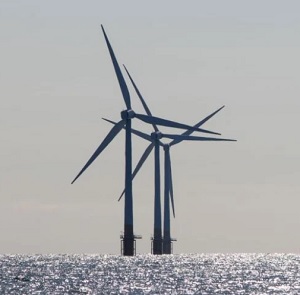 A new recently released report from Rand Acoustics, LLC scientifically documented that the stated sound levels created by the pile driving of wind turbine stanchions into the seafloor is much louder than the NOAA approved levels. In a study dated November 2, 2023, the researchers used acoustic listening devises to record the underwater sounds being created from piledriving by the crane ship “Orion” in the Vineyard wind BOEM lease area OCS-A 0501 southwest of Nantucket Island. Prior to this research, Rand Acoustics documented the underwater sound levels being produced by some of the research vessels using sonar and seismic devises to examine and document the seafloor prior to turbine construction. This research proved that the sound levels produced by these research vessels exceeded the stated sound levels approved by NOAA/NMFS to protect marine mammals and resulted in the documentary film “Thrown to the wind”.
A new recently released report from Rand Acoustics, LLC scientifically documented that the stated sound levels created by the pile driving of wind turbine stanchions into the seafloor is much louder than the NOAA approved levels. In a study dated November 2, 2023, the researchers used acoustic listening devises to record the underwater sounds being created from piledriving by the crane ship “Orion” in the Vineyard wind BOEM lease area OCS-A 0501 southwest of Nantucket Island. Prior to this research, Rand Acoustics documented the underwater sound levels being produced by some of the research vessels using sonar and seismic devises to examine and document the seafloor prior to turbine construction. This research proved that the sound levels produced by these research vessels exceeded the stated sound levels approved by NOAA/NMFS to protect marine mammals and resulted in the documentary film “Thrown to the wind”.
From December 2022 to the present day, there have been over one hundred dead Whales of various species discovered either washed up on east coast beaches or floating offshore, including at least six critically endangered Northern Right Whales. An even larger number of Dolphins have also died mysteriously during this time frame which NMFS calls an UME [unexplained mortality event]. These abnormally high numbers of dead marine mammals have one thing in common, they die while offshore wind research vessels were blasting away nearby, or piledriving was taking place. This coincidence of dead marine animals washing ashore while Wind vessels were working nearby has been collaborated by using AIS marine tracking data of those vessels and the location of the dead marine mammals. While a paper has not yet been published, those results are known, and the study continues as the slaughter shows no signs of abatement. The killing isn’t just limited to Whales and Dolphins, it is all inclusive, Sharks, Sturgeons, Crabs, Clams, Turtles, and more have washed up dead at an alarming rate. But not alarming enough to concern the people in charge at NOAA/NMFS.
NOAA and BOEM are the two agencies’ responsible for issuing Incidental take permits to entities that may negatively impact upon a marine mammal’s health and environment. For many years the commercial fishing industry has been granted incidental take permits under strict rules of obedience, with many measures developed to reduce mortality. This has cost the fishing industry millions of dollars of lost revenue, but it has been beneficial in reducing gear entanglements and other sources of mortality to the threatened and endangered species they are designed to protect. Noncompliance of the regulations can result in catastrophic fines that can bankrupt the offender. NOAA/NMFS has been protecting marine mammals for decades from avoidable mortality by the fishing industry but stand by helplessly when Big Bad BOEM [BBB] allows unthinkable numbers of marine mammals to be harassed and killed by their patrons in the oil/wind industry. Over a decade ago BBB proposed allowing the level B harassment of over 13.5 million Whales and Dolphins over an eight-year period. That included an allowed 138,000 level A takes, [which is death] including 10 Northern Right Whales. Not surprisingly they met with strong opposition from virtually every environmental group in existence, and the proposal was dead on arrival. Now 10 years later those same research vessels have been giving the green light to do the exact same research that was turned down years earlier. The only difference is that the original proposal was for oil exploration, while the ongoing research is for wind turbines. Interestingly, most of the environmental groups that opposed the original BOEM oil exploration and its devastating consequences, are standing on the sidelines watching as what they once vehemently opposed, is now taking place, just under a different pretext.
These are some of the results from the newest Rand Acoustics LLC study that was conducted, titled, Technical Report: Pile driving Noise Survey, November 2, 2023. From the report, “The pile driving operations included double bubble curtains and hydro damper net for noise controls” These are two different noise mitigation techniques that are ineffective at anything except placating the public to believe that the noise being emitted is being reduced to harmless levels. “Nonetheless, the survey results find pile driving impulsive sound levels are similar to seismic air gun arrays and raise concerns about heightened adverse noise impacts on marine mammals”. The noise level of piledriving equaling that of air gun arrays is not a surprise, the fact that these high levels are reached despite the “best” efforts of Bubble curtains, and hydro damper net to reduce the noise, prove that those mitigation techniques are ineffective at best.
“The standard 90-percent RMS metric utilized by the NMFS underestimates the sound level experienced by cetaceans by as much as 6 dB, potentially cutting the protective distances in half and reducing marine mammal safeguarding zones by up to 75%”. This is a highly technical document, and very detailed in its exploration of the facts, but what was found in this report along with the prior report on sonar research, is that NMFS has consistently underestimated the noise level being produced by offshore wind operations.
“The continuous noise generated by vessel propulsion and dynamic positioning thrusters significantly surpassed the federal threshold for behavioral harassment, with noise levels exceeding 120 dB out to over 6 kilometers. Given federal agencies concerns over the compound effects of continuous and impulse noise, this frequently overlooked issue in regulatory assessments constitutes a definitive risk of behavioral harassment to marine mammals, underscoring the need to reevaluate “current
protective measures”. Surprise, just the operational noise of the piledriving vessel [not including the actual piledriving] is loud enough to constitute a behavioral response from marine mammals. This operational noise, although low compared to the effects of sonar, seismic, and piledriving, is a constant disruptive sound that is produced 24 hours a day for as long as the vessel is on site.
“NMFS anticipates that impacts to marine mammals would be in the form of behavioral harassment and no take by injury, serious injury, or mortality is proposed. The basis for the take estimate is the number of marine mammals that would be exposed to sound levels in excess of NMFS level B harassment criteria for impulsive noise [160dB re 1 uPa] and continuous noise [120 dB re 1 uPa rms]]”.
In conclusion; “This investigation discovered a substantial underestimation of both impulsive and continuous noise levels by current regulatory standards, suggesting that the actual exposure to harmful noise levels from piledriving for marine mammals like the critically endangered North Atlantic Right Whale is substantially greater than NMFS acknowledges in its existing protective measures. This indicates an urgent need to review and possibly revise NMFS monitoring protocols and mitigation.
strategies for pile driving to ensure adequate protection for marine mammals against both impulse and continuous underwater noise pollution. The findings detailed in this report underscore the need for immediate action due to the substantial underestimations uncovered by this independent investigation”.
These two studies by Rand Acoustics LLC. raise many questions. Top among them is why isn’t NOAA/NMFS aware of the underestimations of the noise produced by piledriving, sonar/seismic exploration, and even the excessive noise produced by the crane vessel during operations? There is supposed to be acoustic monitoring of these vessels during their operations, this is part of the mitigation protocols, is it being done? If so, where is the information? In regard to acoustic monitoring, there is an extensive network of listening devises operated throughout the Atlantic seaboard by the military, NOAA/NMFS and scientific institutions, what are they recording and is this being hidden from the public? This is important because low frequency noise can travel hundreds of miles underwater, meaning that a sound produced off of Nantucket may be heard off of Virginia. When you consider the amount of newly introduced noise into the environment in the last two years, from dozens of wind
related entities, its hard to imagine that the cumulative effects of such a multitude of noise sources would have no effect on marine mammals.
Is NOAA/NMFS going to review these findings, and using the new higher levels of sound documented, run new models to see if the actual sounds produced would result in a change from level B harassment to level A harassment? It’s pretty clear that something is killing the marine mammals on the east coast, and the only thing that is certain according to NMFS is that the deaths are not related to offshore wind activity. The results from the Rand investigations should change their minds.

































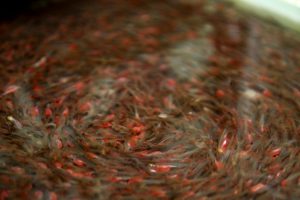
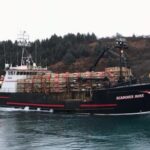




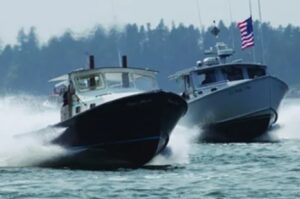


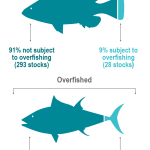
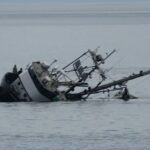



Leave a Reply